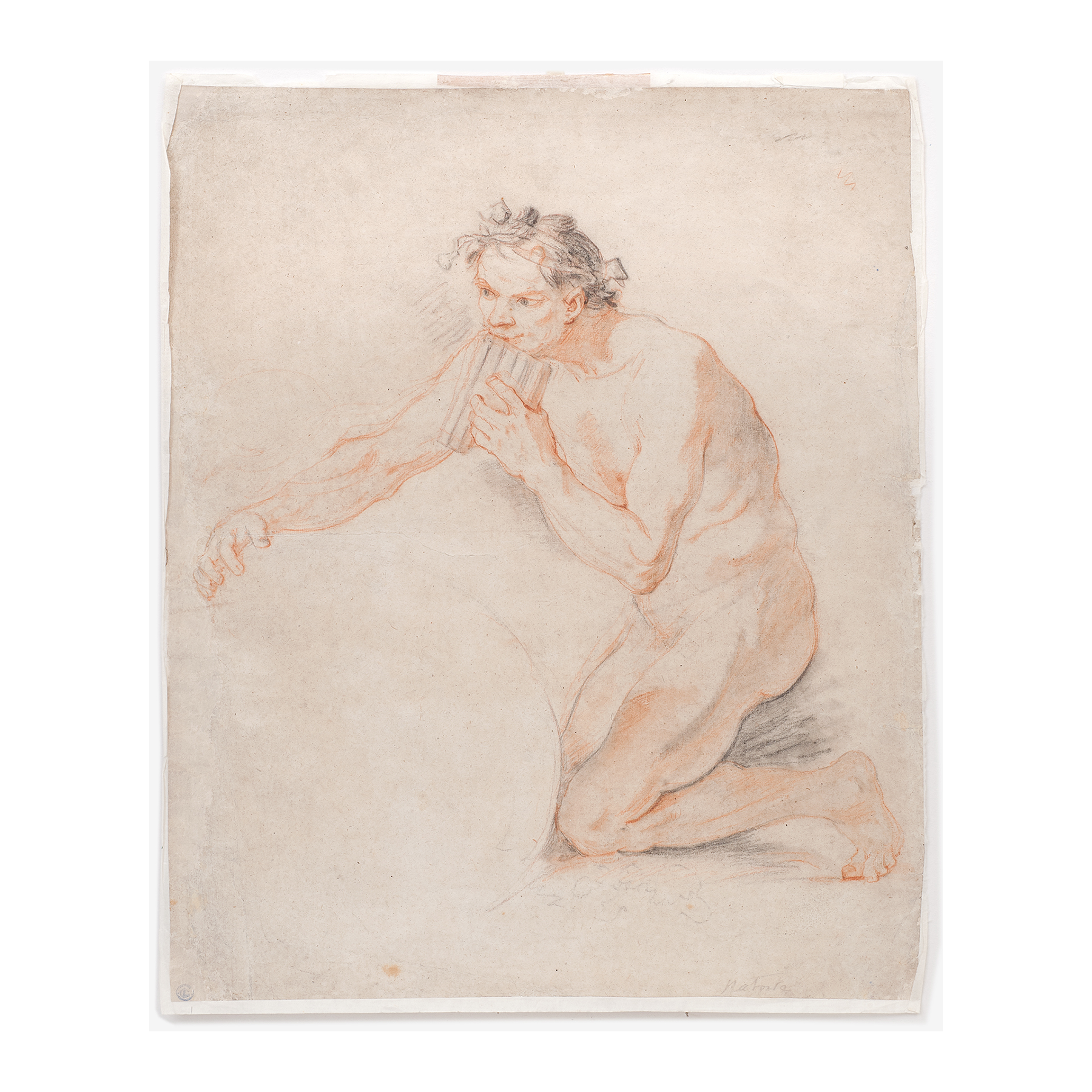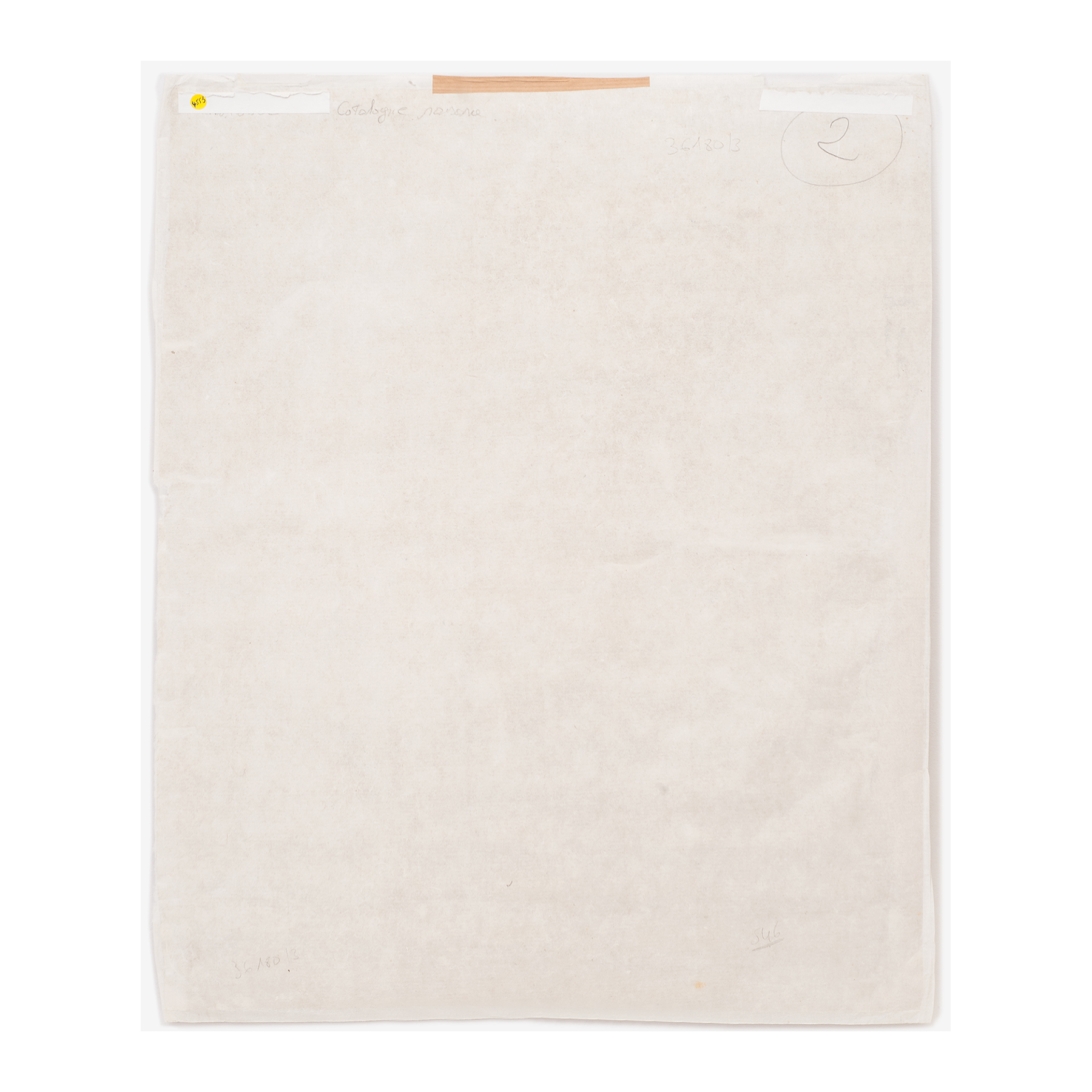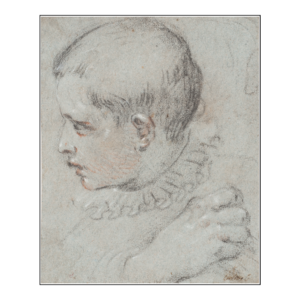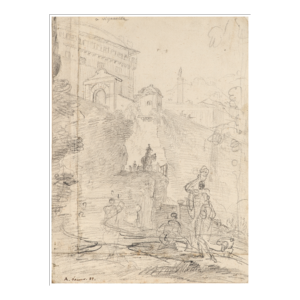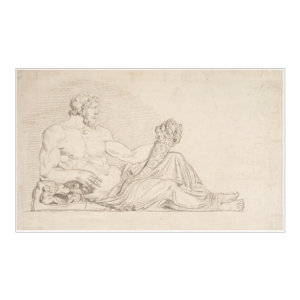Charles-Joseph Natoire
Nîmes, 1700 – Castel Gandolfo, 1777
A Study for the Figure of Pan
Inscribed Natoire lower right with black chalk.
Black chalk and stumping, red chalk, red wash on beige paper.
492 mm x 402 mm – 19 3/8 x 15 13/16 in.
Provenance – Marseille, sale, 13 October 1991; Paris, gallery Jean François Baroni, 1999-2000, London, Sotheby’s, 6 July 2004, lot 121; Paris, Artcurial, 18 November 2014, n° 13.
Literature – Susanna Caviglia Brunel, Charles-Joseph Natoire, Paris, Arthéna, 2012, p. 373, D. 453.
After his training with Louis Galloche and François Lemoyne, Charles-Joseph Natoire won the first prize of the Académie Royale de Peinture et de Sculpture in 1721 and thus became a pensionnaire in the French Academy in Rome in 1723. During his Italian stay, Natoire studied the antique and drew landscape on the motif, developed a particular interest in Pietro da Cortona’s works and also spent some time in Venice. Back in Paris in 1729, his fame rapidly grew, he was made an agréé at the Académie Royale in 1730, he took part in important decoration works for the Castle of La Chapelle Godefroy in Saint-Aubin and the Duc d’Antin’s mansion. He executed numerous works for Versailles, Fontainebleau, and Marly. Appointed director of the French Academy in Rome in 1751, he spent the rest of his life in Italy.
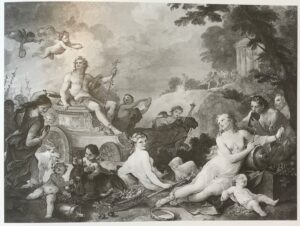
This drawing is a preparatory study for the figure of Pan playing the flute on the right-hand side of the composition of The triumph of Bacchus, a painting executed in 1750 and exhibited at the Salon the same year (see Livret, n° 26: “un tableau en largeur de 6 pieds sur 5 de hauteur représentant Le Triomphe de Bacchus” (an horizontal painting 6 feet high and five feet width representing the Triumph of Bacchus)). Nowadays lost, this work is known thanks to a copy in the Museo Amadeo in La Spezia (fig. 1, inv. 37)[1]. According to Susanna Caviglia-Brunel, this Bacchic scene could be a replica in reverse of an earlier triumph of Bacchus painted at the occasion of the 1747 concours (Paris, Musée du Louvre, inv. 6854), a competition organized by Lenormant de Tournehem in order to stimulate history painters from the Académie Royale.
The use of red and black chalk on a same study is quite common in the artist’s drawings of the 1740’s. Susanna Caviglia-Brunel has observed “an increasing interaction between these two techniques through a display of subtle nuances but also a specialized way of using them : black chalk being here consistently used for hair and pupils as well as shadows.”
[1] Cf. Susanna Caviglia-Brunel, Charles-Joseph Natoire, Paris, Arthena, 2012, p. 372-373, d’après P. 212.
Condition report – Lined on Japan paper, old loss compensation on the left side. Horizontal fold and small brown stain at the bottom left.

